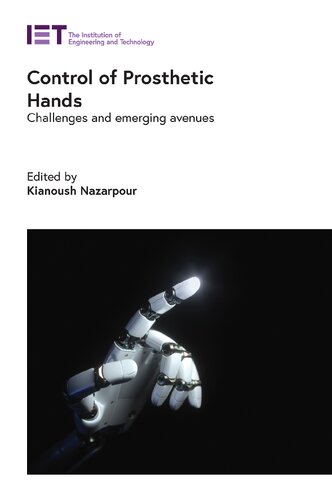

Most ebook files are in PDF format, so you can easily read them using various software such as Foxit Reader or directly on the Google Chrome browser.
Some ebook files are released by publishers in other formats such as .awz, .mobi, .epub, .fb2, etc. You may need to install specific software to read these formats on mobile/PC, such as Calibre.
Please read the tutorial at this link: https://ebookbell.com/faq
We offer FREE conversion to the popular formats you request; however, this may take some time. Therefore, right after payment, please email us, and we will try to provide the service as quickly as possible.
For some exceptional file formats or broken links (if any), please refrain from opening any disputes. Instead, email us first, and we will try to assist within a maximum of 6 hours.
EbookBell Team

4.1
60 reviewsThis edited book brings together research from laboratories across the world, in order to offer a global perspective on advances in prosthetic hand control. State-of-the-art control of prosthetics in the laboratory and clinical spaces are presented and the challenges discussed, and the effect of user training on control of prosthetics to evaluate the translational efficacy and value for the end-user is highlighted.
The book begins with a chapter introducing the fundamental principles, engineering challenges and control solutions for prosthetic hands. Further chapters address methods to design bespoke sockets, magnetomyography, implantable technologies for closed-loop control of prostheses, direct neural control of prostheses via nerve implants as well as user-prosthesis co-adaptation, and two chapters on prosthetics for children. The book concludes with a chapter by Dr Nazarpour on the future of myoelectric prosthetics control, with particular focus on the successful translation of research advances into real clinical gains.
The book is essential reading for anyone involved in research or undertaking advanced courses in prosthetic design and control. It provides an in-depth exploration of this rewarding topic, by exploring technologies with the potential to improve the quality of life of upper-limb prosthetic users.